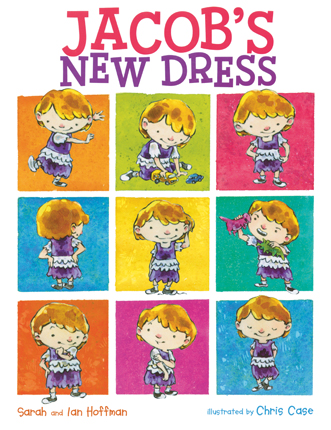Full Text Reviews: School Library Journal - 02/01/2014 PreS-Gr 2—Jacob likes to play dress up with his friend Emily, but he prefers to pretend that he is a princess rather than a knight, firefighter, or policeman. The boys in his class tease him and wonder why he wears dresses. His teacher explains that "Jacob wears what he's comfortable in. Just like you do. Not very long ago little girls couldn't wear pants. Can you imagine that?" Jacob returns home from school to tell his mother that one of his classmates says that boys can't wear dresses. His parents support him as he makes his own dress with his mother's help, and she shares with him that "there are all sorts of ways to be a boy." An author's note explains how parents, educators, and counselors can make a difference in the lives of gender-nonconforming children. The warm cartoon illustrations convey the mood well and offer readers visual clues to the cruelty, teasing, and struggle with self-acceptance that can occur when children are different from their peers. Purchase this one to encourage discussions of gender, identity, and self-confidence.—Melissa Smith, Royal Oak Public Library, MI - Copyright 2014 Publishers Weekly, Library Journal and/or School Library Journal used with permission. Booklist - 03/15/2014 Jacob wants to wear a dress to school, so he fashions one from a towel—a “dress-thing.” His mother tells him to add some shorts and a shirt, and off he goes to school, where he is teased by a fellow student, Christopher, who pulls the towel off and waves it “like a captured flag.” That evening, a tearful Jacob asks his mother to help him make a real dress, and after some thought, she agrees. Jacob’s father adds, “Well, it’s not what I would wear, but you look great.” At school, there’s more teasing, but Jacob finally tells Christopher, “I made this dress, I’m proud of it, and I’m going to wear it!” And so he does. In an afterword, the coauthors explain that Jacob is a “gender nonconforming” boy and that gender expression is inborn—not something we choose. The authors’ gentle but necessarily didactic story succeeds in dramatizing this concept. Case’s softly colored cartoonlike illustrations nicely expand the spirit of this important book, which—one hopes—will provide reassurance to children like Jacob and inspire thoughtful discussion. - Copyright 2014 Booklist. Bulletin for the Center... - 04/01/2014 When Jacob plays dress-up at school, he’d rather wear the princess’ dress and crown than the knight’s shining armor. His mom is skeptical about him wearing a dress to school, so he fashions a “dress-thing” out of towels to wear over his other clothes. Insisting that boys don’t wear dresses, a classmate de-towels Jacob, but that doesn’t stop Jacob from asking if he and his mother can sew a fantastic new purple and white dress to wear. Though hesitant, she agrees, and Jacob wears his dress, giving him courage and confidence on the playground. The thin plot and over-earnest take on its topic makes this story of gender nonconformity more therapeutic than entertaining, but Jacob’s concrete emotional reactions to people’s perceptions of his behavior (“Mom didn’t answer. The longer she didn’t answer, the less Jacob could breathe”) might be helpful to youngsters in similar situations. Case’s illustrations are gentle in their use of the textures of watercolor and gouache to create a slightly fuzzy world in a realistic palette; his characters’ cartoonishness-big heads and dot eyes-also helps with their emotiveness. Although Zolotow’s classic William’s Doll (BCCB 7/72) covers similar ground more effectively, this is still a welcome addition to the recent uptick in picture books about gender nonconforming kids. Back matter includes an author’s note and a note from a social worker on gender nonconformity among younger children. TA - Copyright 2014 The Board of Trustees of the University of Illinois. Loading...
|



